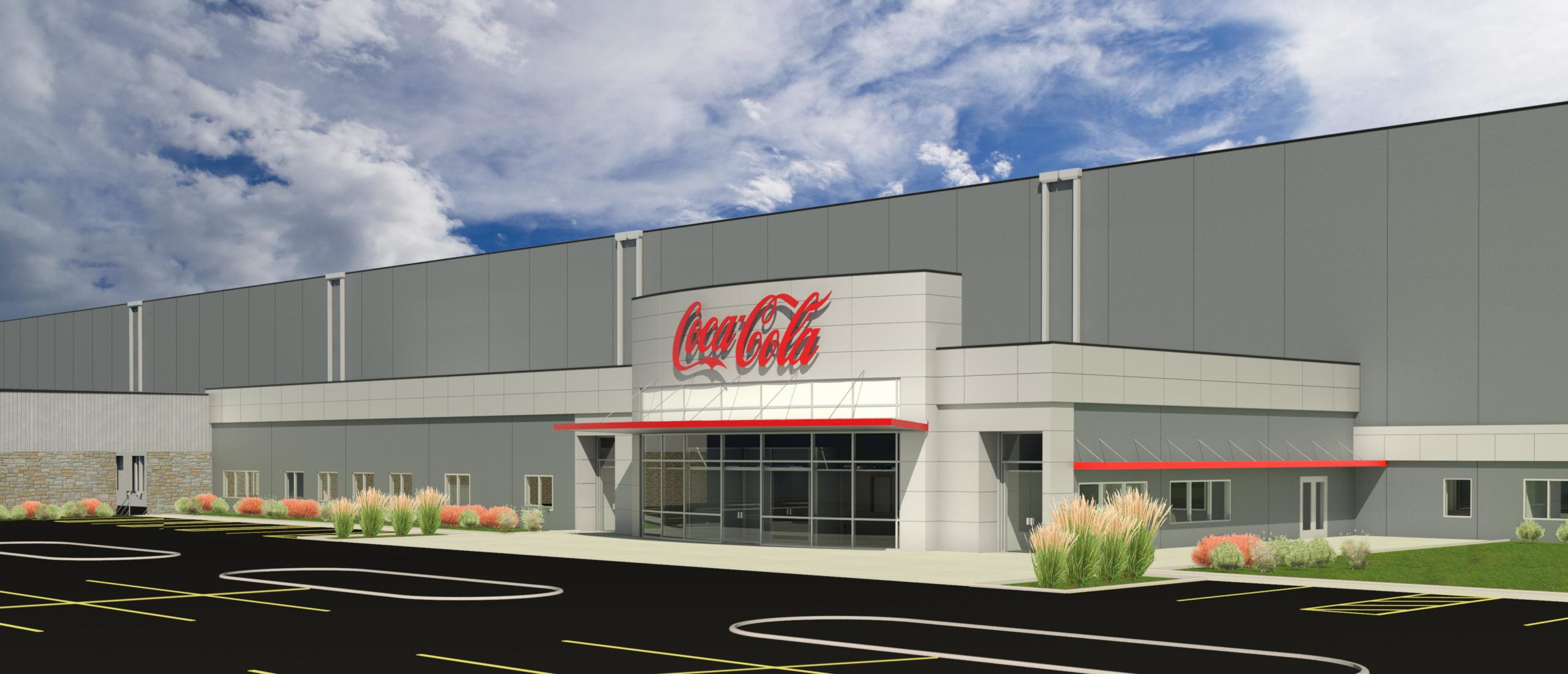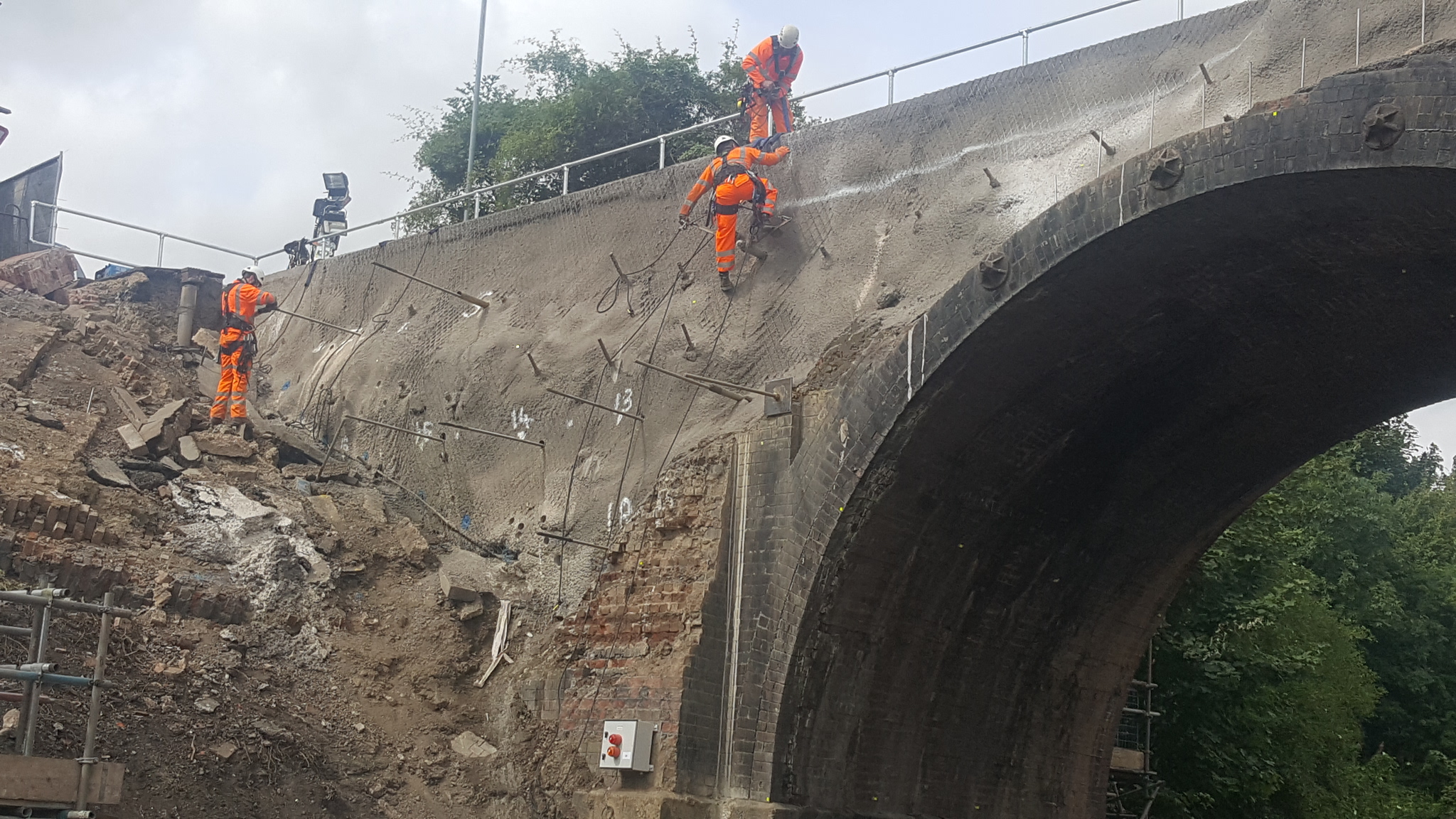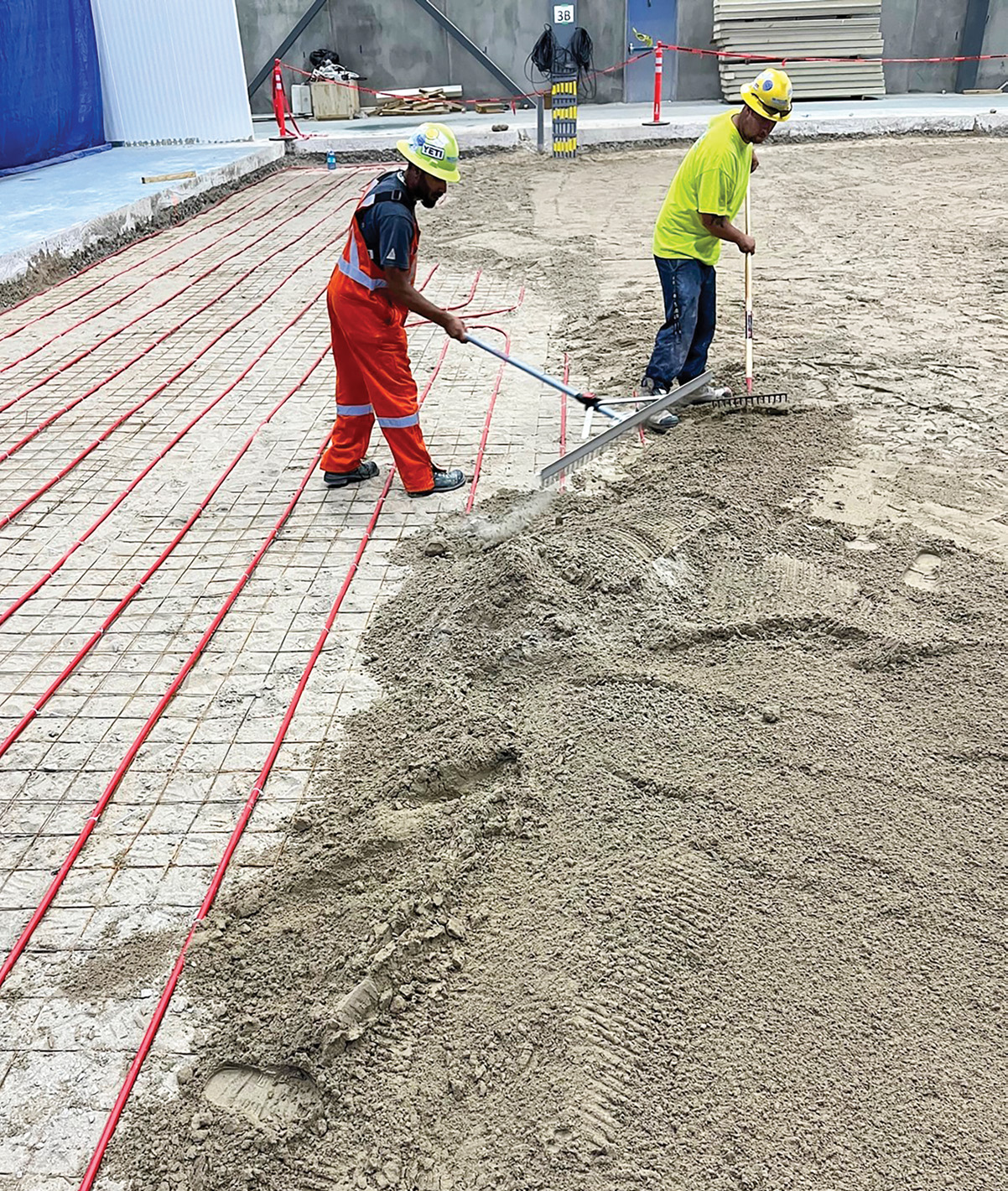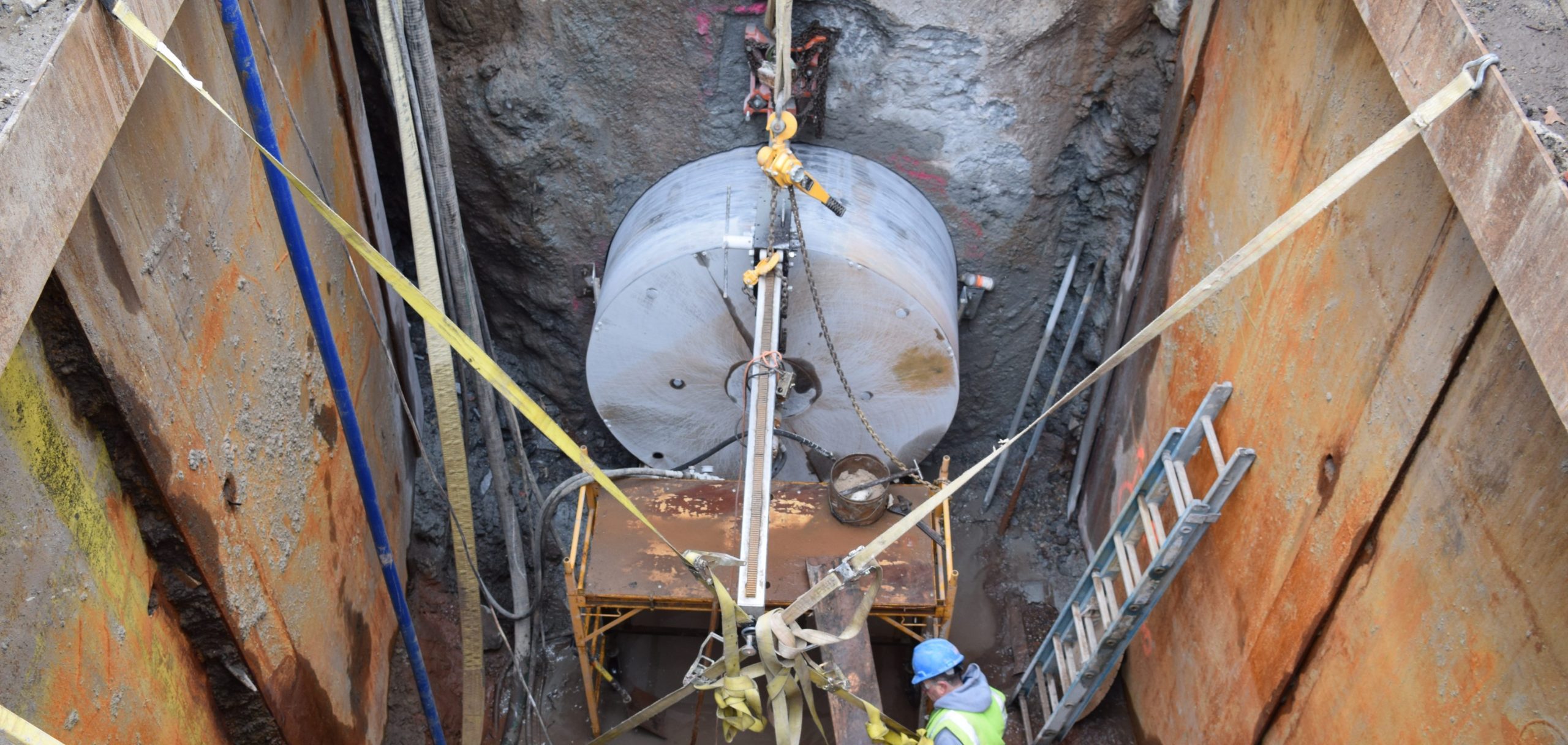
Open Wide
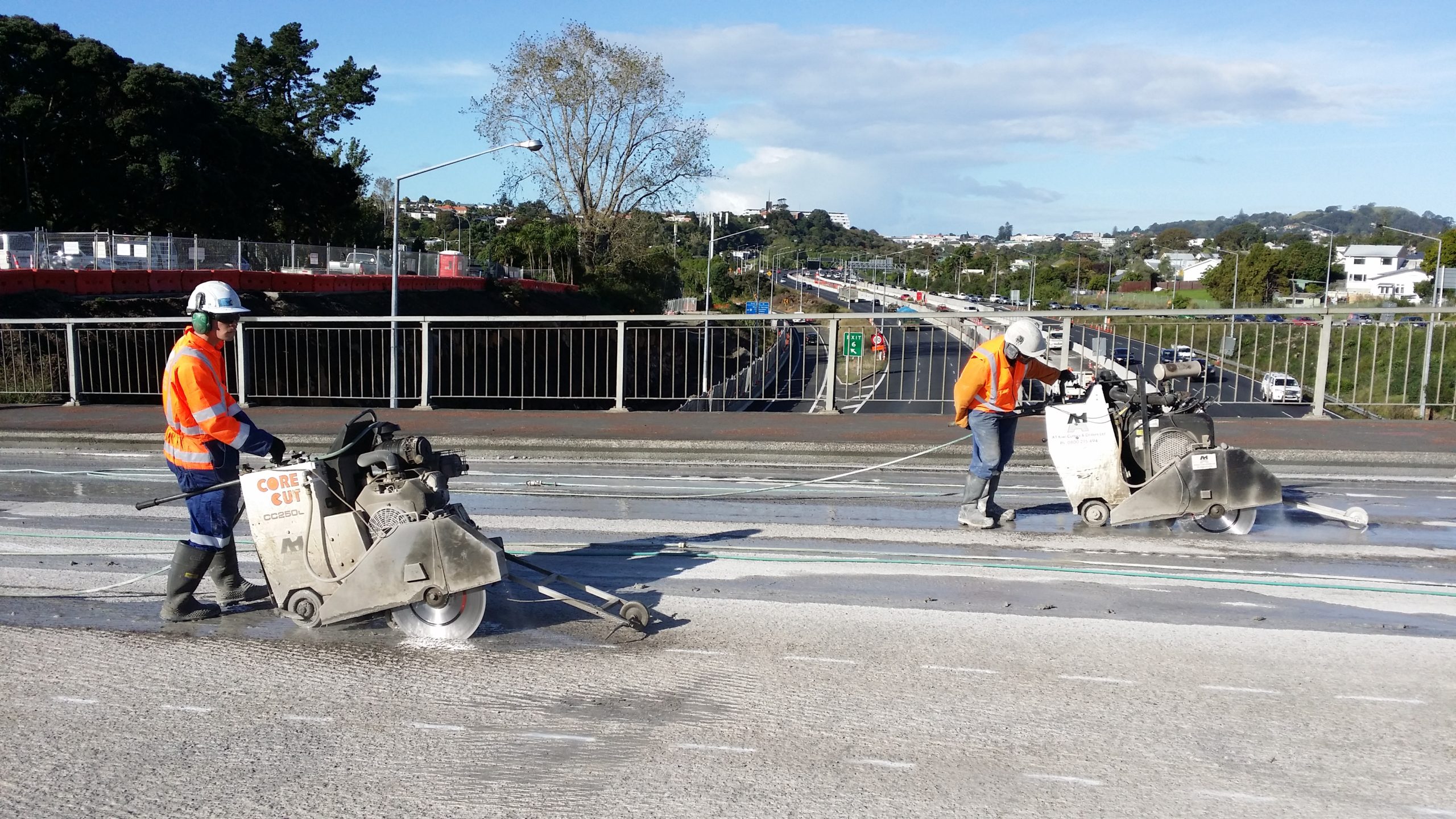
CSDA Member Extracts Motorway Bridge for Widening Project
(Aerial photo courtesy of the NZ Transport Agency)
A specialty concrete sawing and drilling contractor recently completed an extensive amount of cutting work to help remove 1,200 tons of concrete as part of a two-year, $1.9-billion USD widening and tunneling scheme on a motorway that carries 100,000 cars each day.

Core drill operators created almost 200 holes for the reinforcement and lifting of bridge sections.
The work included over 500 meters (1,640 feet) of flat and wall sawing, 50 square meters (538 square feet) of wire sawing and the coring of almost 200 holes.
New Zealand’s North Western Motorway (also known as State Highway 16) links Auckland’s central business district to the western and northwestern suburbs of the city. Since May 2014, work has been underway to widen an 8-kilometer (5.2-mile) section of the motorway in the Western Springs area from three lanes to four in each direction. This expansion helps better accommodate the amount of vehicles that travel on the motorway each day and improves traffic flow on and off the carriageways at Exit 6, which is located within the widening area.
St Lukes Road spans the North Western Motorway at Exit 6 via a 44-meter-long (144-foot) by 16-meter-wide (53-foot) reinforced concrete bridge. This bridge had to be removed to allow the motorway widening work to continue under it and the decommissioning had to be completed without disrupting daytime traffic. A new bridge was constructed adjacent to the existing to allow traffic on St Lukes Road to flow uninterrupted during the work. The old bridge consisted of 24 precast, pre-tensioned beams. Each beam was 1,100 millimeters (43 inches) tall and transitioned from 900 millimeters (35 inches) wide at the top to 500 millimeters (20 inches) at the bottom, spaced at 1.25-meter (4.1-foot) centers. The bridge had a 100 to 200-millimeter-thick (4 to 8-inch) topping slab and two abutments, one of which remained in use for a new bridge, the other was cut up and removed. In addition, a center pier and headstock structure were removed.
It was important that the New Zealand Transport Agency and Auckland Transport, the two organizations that jointly funded the project, found a way to complete the bridge removal with low levels of noise and minimal debris to mitigate disturbance to nearby residential and commercial properties and protect the carriageway below. The bridge, which was built in the 1980s, contained asbestos sheeting that acted as permanent form work in the gaps between each beam. Therefore, any debris created during work on the bridge had to be captured and disposed of at a licensed asbestos disposal facility. Also, as New Zealand is determined a high-risk country for earthquakes, a temporary restraining structure had to be installed. This involved drilling to install reinforcing bars with transverse bars linking them together, which were configured to allow each individual beam to be lifted off separately.
“Concrete breaking techniques were never really considered for this job because of noise, potential damage to the carriageway, asbestos contamination and time constraints,” said Penny Simons, director of CSDA Member A1 Kiwi Cutters & Drillers Ltd of Auckland. The company was contracted by Leighton Contractors Pty Ltd to use concrete sawing and drilling techniques for the bridge decommissioning between April and June 2015. “Our core drilling and wire sawing equipment allowed us to complete tasks at any time of day, while at night we used three-phase electric floor saws with “silenced” blades to minimize noise.”
The first task was to separate the pre-tensioned beams by cutting the joins between each one. The bridge deck was surveyed to find the correct locations for the cut lines, as well as locating the diaphragm beams and establishing the exact thickness of the topping slab. As the asbestos sheeting was being cut at this stage, a slurry capture structure was installed under the bridge. A 400-millimeter-wide (16-inch), 11-meter-long (36-foot) and 800-millimeter-deep (31.5-inch) drain was custom fabricated for the project and fixed to an elevated work platform.

A layer of asbestos sheeting formwork meant the control and disposal of slurry had to be handled carefully.
Using a gas-powered flat saw from Diamond Products, operators cut to 20 millimeters (1 inch) above the asbestos sheeting formwork and completed 500 meters (1,640 feet) of this cutting during day shifts. The lifting holes and holes for the temporary restraining structure were drilled at this time also. Operators used Hilti core drills and rigs to create four 200-millimeter-diameter (8-inch) holes up to 200 millimeters (8 inches) deep through each beam for lifting and made 96 of these holes in total. A further 96 holes were cored 40 millimeters (2 inches) in diameter and 130 millimeters (5 inches) deep for the installation of the restraining structure.
During night shifts, the slurry capture structure was set up and an electric flat saw from Diamond Products was used to cut the remaining 20 millimeters (1 inch) of the slab through the asbestos sheeting. The work was frequently monitored to ensure no asbestos fibers escaped, all results were negative. All night shift work was completed between 11:00 PM and 4:00 AM during a full shut down of this stretch of motorway.
After the temporary restraining structure was installed by others, the team from A1 Kiwi returned to the jobsite to begin cutting the diaphragm beams. These beams held the bridge beams together and were 550 millimeters (22 inches) wide by 1.1 meters (3.6 feet) deep. There were four beams, one at each abutment and one on either side of the central pier structure. In total, operators made 44 of these cuts using a wire saw from Hilti.
The cutting contractor remained onsite at night while a 500-ton crane was used to lift out the beams sequentially before being transported to a waste dump. The crane removed 20 beams that weighed 42 tons and four that weighed 62 tons.
Last on the cutting contractor’s list of tasks, was the removal of the central pier and headstock. These sections were cut into pieces using the wire saw, with an average weight of 10 tons. To remove the 600-millimeter-thick (24-inch) abutment, an operator employed a Hilti track-mounted wall saw with a 1,600-millimeter-diameter (63-inch) blade to make the necessary horizontal cuts.
All slurry was captured and disposed of offsite. This was achieved by using self-emptying vacuum cleaners that pumped the slurry into 1,000-liter (264-gallon) containers. Asbestos-contaminated slurry was taken to a licensed facility while the non-contaminated slurry was taken to A1 Kiwi’s own disposal facility.

Operators performed 500 meters (1,640 feet) of flat sawing on the bridge slab.
The control and containment of slurry and debris was just one of the factors that complicated this job. The lifting of cut sections, some weighing as much as 62 tons, could only be done at night within a five-hour window. It was established that crane setup and take down time would account for two hours, so this left only three hours of actual work time with the crane. The original program for the work was extremely tight, so A1 Kiwi did take an extra two shifts to ensure the work was done correctly and safely. The general contractor was satisfied that the job was done with no lost time injuries, no noise complaints from local businesses or residents, no debris left on the carriageway and within the parameters of the program.
“We were very satisfied with the outcome. The team chosen for this particular job took ownership of the cutting work and pushed themselves hard to ensure each task was completed to their own personal satisfaction, the company’s satisfaction and, most importantly, the satisfaction of the client. The result was a challenging and difficult job done well,” concluded Simons.
Company Profile
Established in 2005, A1 Kiwi Cutters & Drillers Ltd. is one of the largest concrete cutting companies in Auckland, New Zealand. The company joined CSDA in 2009 and currently has 20 employees and 15 trucks. A1 Kiwi Cutters & Drillers offers the concrete cutting services of slab sawing, core drilling, wall sawing, wire sawing, hand sawing, grinding and ferro scanning.
Resources
General Contractor:
Leighton Contractors Pty Ltd
Sawing and Drilling Contractor:
A1 Kiwi Cutters & Drillers Ltd
Auckland, New Zealand
Phone: 64-94203386
Email: thegirls@kiwicutters.co.nz
Website: www.kiwicutters.co.nz
Methods Used: Flat Sawing, Core Drilling, Wall Sawing, Wire Sawing











